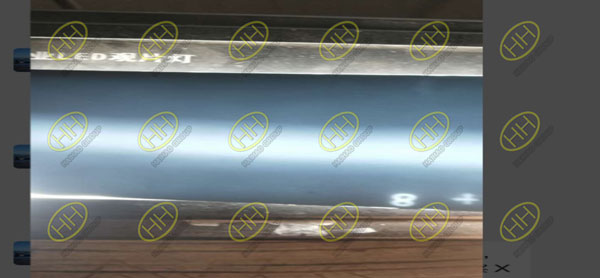Introduction to radiographic testing
Radiographic testing commonly used in the industry are X-ray inspection and gamma ray inspection.Refers to the use of electromagnetic waves to detect metal workpieces,similar to X-ray.The passage of the ray through the material to the backsheet will result in a uniform sensitization of the film; if defects such as cracks,holes,and slag inclusions are encountered,a shadow zone will generally be displayed on the film.This method detects the size and shape of the defect and also determines the thickness of the material.
X-rays are produced by impacting an anode target with high-speed electrons under high vacuum conditions.Gamma rays are radioactive isotopes that are emitted during atomic transmutation.Both are electromagnetic waves with high penetration and short wavelength.Objects of different thicknesses need to be penetrated by rays of different energies,so different sources of radiation are used separately.For example,X-rays emitted by X-ray tubes (when the acceleration voltage of electrons is 400 kV),gamma rays generated by radioisotope 60Co and X-rays generated by a 20 MeV lin,the largest steel that can penetrate The thicknesses are approximately 90 mm, 230 mm and 600 mm, respectively.

Haihao Group is checking the film to judge the defect
First,X-ray machine
The low-energy X-ray machine used in industrial radiographic inspection is composed of four parts:a ray generator (X-ray tube),a high-voltage generator,a cooling system,and a control system.When the parts are independent,a high voltage cable should be used between the high voltage generator and the ray generator.
According to the structure of the X-ray machine,X-ray machines are generally classified into three types,a portable X-ray machine,a mobile X-ray machine,and a stationary X-ray machine.
The portable X-ray machine employs a combined ray generator whose X-ray tube, high voltage generator,and cooling system are collectively mounted in a casing,also referred to simply as a ray generator, which is filled with an insulating medium.The whole machine consists of two units, the controller and the ray generator,which are connected by a low voltage cable.The insulating medium filled in the ray generator,which is a transformer oil with high electric strength at an early stage,should have an electric strength of not less than 30 to 50 kV/2.5 mm.Most of the filled dielectric is sulphur hexafluoride (SF6) to reduce the weight of the ray generator.
The core device of the X-ray machine is an X-ray tube, and the ordinary X-ray tube is mainly composed of an anode,a cathode and a tube.
The x-ray is excited by the x-ray tube plus high-voltage electricity,and the intensity of the x-ray can be adjusted by the applied voltage and current.
For low-voltage X-ray machines,only a small part of the energy input to the X-ray tube is converted into X-rays,and most of them are converted into heat,so good heat dissipation is required for the X-ray machine.
The main technical performance of the X-ray machine can be summarized into five:workload characteristics,radiation intensity,focus size,radiation angle,leakage radiation dose.When selecting an X-ray machine,consider whether the above performance is suitable for the work performed.
Second,gamma ray machine
A gamma ray machine uses a radioisotope as a gamma ray source to radiate gamma rays.An important difference from an X-ray machine is that the gamma ray source constantly emits gamma rays continuously,and the X-ray machine only generates after the power is turned on and the high voltage is applied.X-ray,which makes the structure of the gamma ray machine different from that of the X-ray machine.The gamma ray is excited by radioactive elements and the energy is constant.The intensity cannot be adjusted and only decreases exponentially with time.
The gamma ray flaw detectors are divided into three types:portable,mobile,and stationary.The portable gamma ray machine is light,small in size,small in weight,easy to carry and easy to use.However,from the perspective of radiation protection,it cannot be equipped with a high-energy gamma ray source.
The gamma ray machine is mainly composed of five parts:a source component (sealed gamma ray source),a source container (host body),a source (guide) tube,a drive mechanism, and an accessory.
Compared with X-ray machines,gamma ray machines have the characteristics of simple equipment, easy operation,and no water and electricity. However, the consequences caused by gamma ray machine operation errors will be very serious.Therefore,attention must be paid to the operation and use of gamma ray machines.According to the relevant regulations of the state,units using gamma ray machines involve radioisotopes. Therefore,the unit must apply for a radiation safety permit.The operators should be specially trained and qualified for training.
Radiation detection uses radiation sources or radiation devices to emit radiation.Inadvertent operation can cause radiation damage to personnel.The operator should perform radiation protection and pay attention to the proper preservation of the radioactive source.

